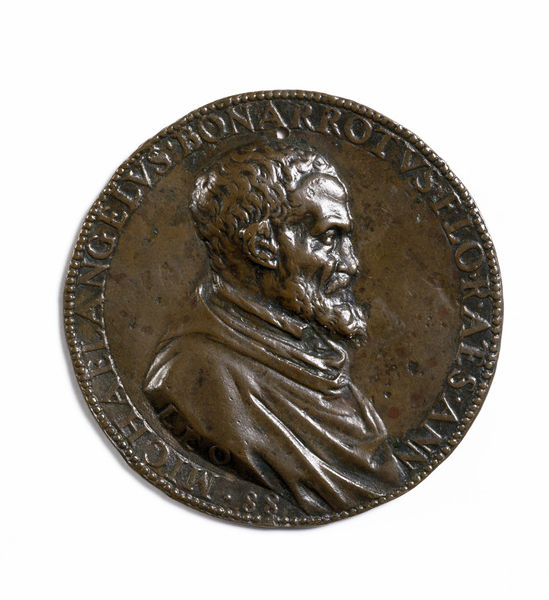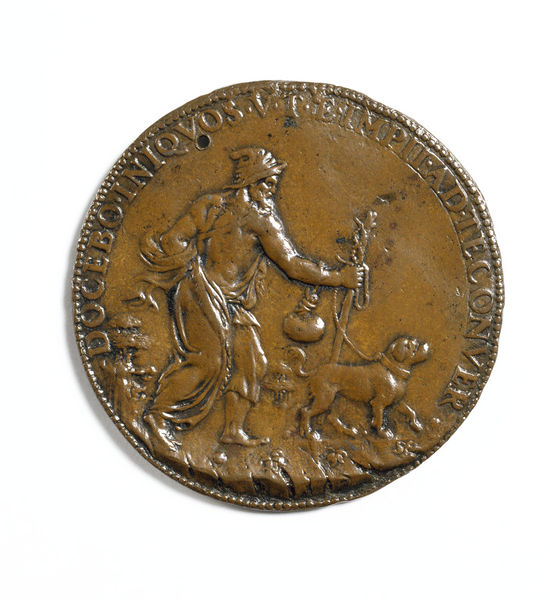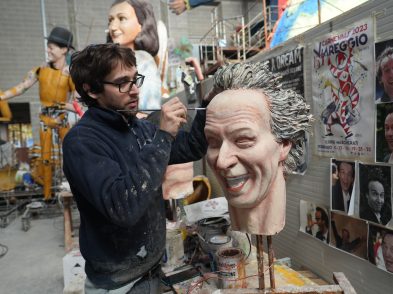There are few artifacts as fascinating as the Renaissance portrait medal, an intimate object meant to be held in the hand and studied up close.
Portrait medals appeared in Italy in the 1430s as a result of a revived interest in classical antiquity and the Renaissance philosophy of man. Increased awareness of individual human excellence or personal virtù resulted in the desire to be remembered for posterity. One original way to attain earthly immortality was through the portrait medal, which was small, durable, portable and easily reproduced. In addition, this miniature object contained a wealth of information about the person represented.
The function of portrait medals was consistent with the commemorative role of ancient bronze coins: the same word, medaglia, was used for both ancient and Renaissance pieces. In both periods, two principal functions of portrait medals were commemoration (marking political events, weddings and anniversaries) and awards to individuals for their services. Medals of the deceased were also produced, which celebrated the life of the person depicted.


Michelangelo medal ©Victoria and Albert Museum, London
Most scholars agree that the basic form of the Renaissance portrait medal was invented by Antonio Pisanello in 1438. Although already a famous painter, Pisanello became a medalist of choice for the king of Naples, Alfonso of Aragon and North Italian signori, like Lodovico Gonzaga, Sigismondo Malatesta and Leonello d’Este. They recognized that, by commissioning medals, they could preserve not only their own names but those of humanists at their courts. The medal’s easy portability guaranteed that its message would be spread far and wide. It would also have been seen as “official”, even though it was not used as a practical tool of the state and had no monetary value, which was the main use of the medal’s predecessor, the Ancient Roman coin.
Portrait medals were made in gold, silver, bronze and lead. Judging from surviving examples, bronze was the most popular medium. They were small objects of art; the size of portrait medals can range from 3 to 11 cm in diameter. The side with the portrait is known as obverse, while the reverse side clarified the circumstances and celebrated achievements of the person portrayed.
While portrait medals had a variety of functions, one of their principal roles was to serve as a gift. As will be seen from our two examples, to give a portrait medal was to show admiration and affection to a fellow human being. This is clear from a letter that the artist Leone Leoni wrote to Michelangelo on March 14, 1561. Leoni, who deeply admired the elderly artist, made a portrait medal of him on the occasion of his birthday, and sent him four copies, two in silver and two in bronze. He wrote: “The one which is in the box is all cleaned. Keep it and look after it for love of me. Do with the other three what seems right to you. In my ambition, I have sent some to Spain and Flanders, and likewise through love have sent some to you in Rome and to other places.” The amount of information we learn from this letter is vast. We see that Leoni took the liberty of widely distributing copies of the medal. This is confirmed by Vasari, who also informs us that Michelangelo was pleased with the medal, and in turn he presented Leoni with a wax model of one of his statues. In addition, he recommended Leoni’s services to the Pope. This was probably the last known portrait of Michelangelo to be made during his lifetime. He died on February 18, 1564, just before his 89th birthday. The image on the reverse shows a pilgrim recognizable by a wide brimmed hat, a knapsack and a long staff, led by a dog, as he makes his way through an empty landscape. It is believed that Michelangelo himself came up with this image of the earthly pilgrimage, in which only faith can lead the way.

Lysippus medal ©The Trustees of the British Museum
My other personal favorite is a portrait medal that combines the individual aspect with practicality and serves as a Renaissance example of modern dating apps. It is a type of medal adapted by a mysterious artist known as Lysippus the Younger, which had the reverse side completely polished up to serve as a mirror. The obverse bore the image of the donor and an inscription such as this: DI LA IL BEL VISO ∙ E QVI IL TVO SERVO MIRA (On the other side admire your beautiful face ∙ and on this side your servant). This practical, if narcissistic, medal allowed its young commissioner to be “a servant” to as many love interests he deemed appropriate, without going to the trouble of having their actual faces carved on the surface. And when he himself looked at it, he saw his own image on both sides. The fact that this portrait medal survives in three copies gives it a true Tinder-y vibe.
To admire one of the most extraordinary Renaissance portrait medal collections in Italy, head over to the Bargello Museum when it reopens this summer. There are two rooms dedicated to these precious objects, patiently waiting to be rediscovered.
Upcoming events with Paola
Join Paola for the following virtual art discussions: RSVP to Paola50122@gmail.com
–Up close and personal: Renaissance Portrait Medals
June 25, 8am PST /11am EST (USA) – 5pm CET (Italy)







